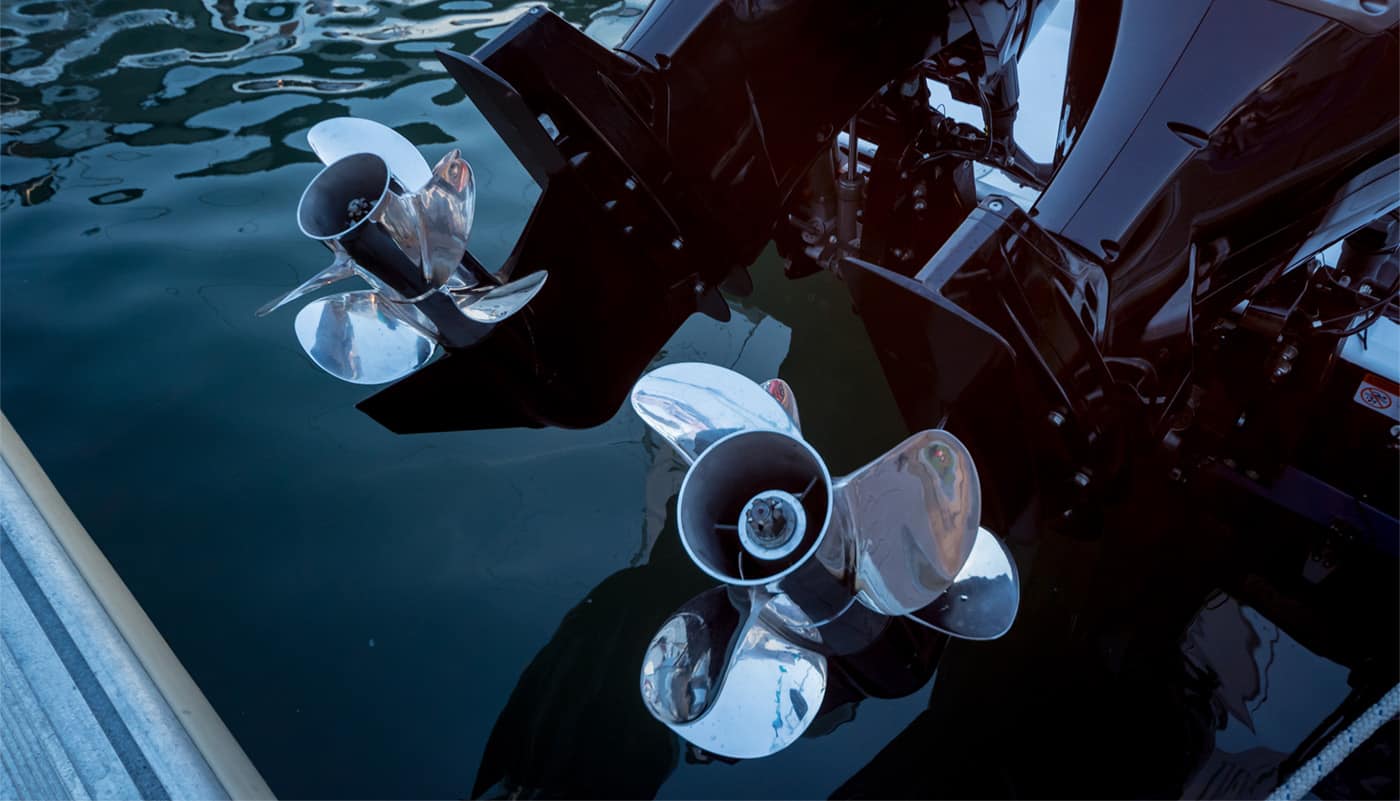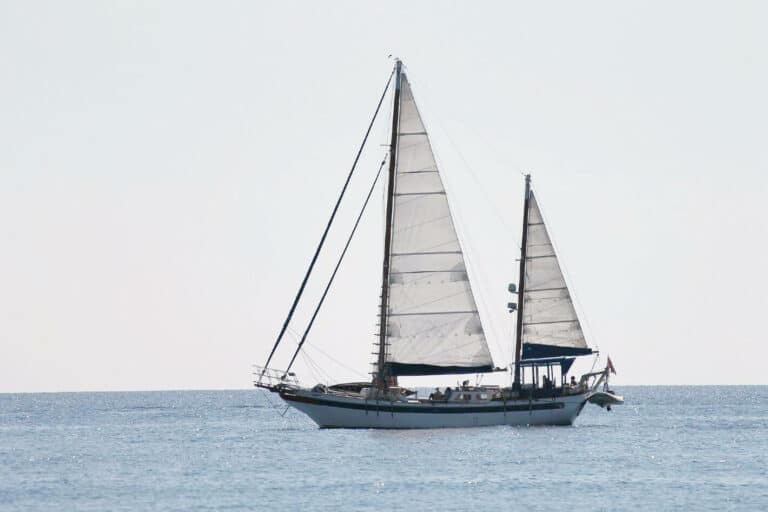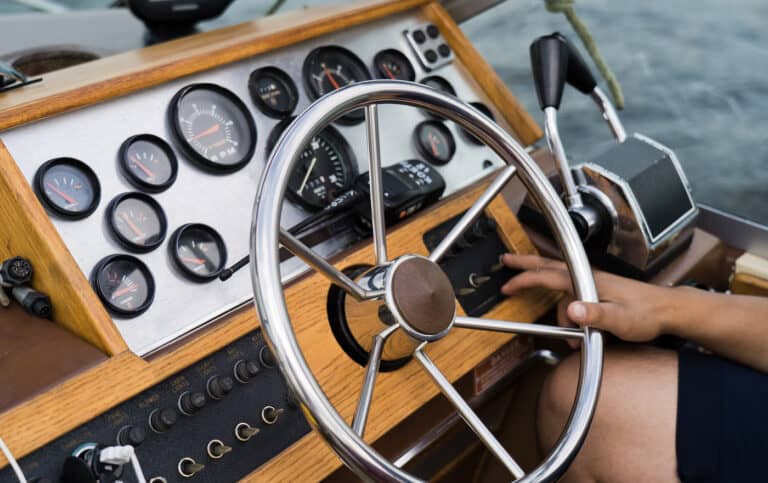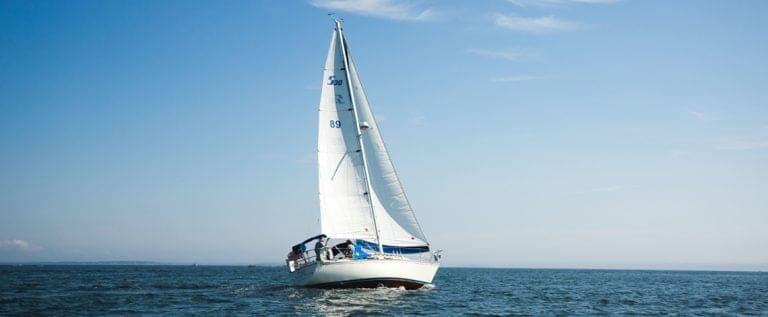Probable propeller injuries while you are boating represent the never-happen-to-me class of accidents. I dare to say the “virtual improbability”, implied as improbability, of a “so stupid injury, where I am not such”, makes the prop strike a real danger.
Propellers hit people severely now and then, far more often than we wish. Today we speak about what piece of equipment on a boat is most important in preventing propeller strike injuries and fatalities, and how to prevent the disaster to never happen.
- Ignition Lanyard Prevents Propeller Strike Injuries on Smaller Boats
- Motor Kill Switch Helps to Avoid Propeller Strike Accidents for Pleasure Boats
- Propeller Guards
- What is a Propeller Strike?
- Numbers and Physics of a Propeller Strike
- Legal Responsibility
- How Can Propeller Strike Accidents Be Avoided?
- What Else Prevents Propeller Strikes Injuries
- What to Do When a Prop Hits a Man on Your Watch
- So, What Piece of Equipment on a Boat is Most Important in Preventing Propeller Strike Injuries – Final Words
Ignition Lanyard Prevents Propeller Strike Injuries on Smaller Boats
An ignition lanyard, a piece of equipment on small and shaky motorboats, is among the most important in preventing propeller strike injuries and fatalities. You’d better have it along and apply other safety measures, yet it works for and is present on small motorboats.
The ignition lanyard is less useless for bigger cruisers, which is obvious. But we have another one called “motor kill switch”.
Motor Kill Switch Helps to Avoid Propeller Strike Accidents for Pleasure Boats
Technically there are two of them helping to avoid propeller strike accidents. One cuts the electric circuit so the engine won’t start without electricity, and another cuts off fuel.
For the latter, the engine may start having no connection to the fuel tank as soon as there is fuel residue in the pipe and vapor inside the engine, but it won’t run steady and will stop quickly (don’t burn it then).
The serious con for this measure is that we often forget to turn the fuel switch back on, and in this case, you risk setting yourself busy removing air from the motor, which takes time then and is not funny but affordable.
It’s okay; life goes first anyway.
Propeller Guards
What prevents propeller strike injuries else? It’s called propeller guards, yet such are tricky to install and welding involved, but for hundreds of horsepowers, you consider propeller guards too.
A propeller guard is usually a ring band, aka “Kort nozzle“. It prevents things (and parts of the body) from getting caught once approaching the propeller from the aside.
But it does not protect from coming to the propeller straight. Yet, it is at least some protection, fair enough. By the way, sea animals will be thankful; those seals and others are curious enough (if you have some in your waters).
Another type of propeller guard is a cage, often called a “mask”. Such may reduce power and is even harder to install, but it performs well. I suggest it’s already too much for a regular yacht, but yes, it serves for safety anyway.
What is a Propeller Strike?
Propeller strikes occur when a person is in water, out of the boat. For example, that may happen during the anchorage when you or your guests go swimming, diving, or climbing back onboard from astern. Also, on the MOB situation.
1) Only allow people from your boat to swim when the prop is off.
2) Keep a MOB away from the propeller.
3) Mind that there may be other swimmers around, especially when you are motoring close to the beach. Some of them can be underwater diving or snorkeling.
Needless to say, the propeller hit is very-very-very painful. We all tried once in a lifetime to put a finger into a working cooling fan with plastic blades at home. But a steel or brass boat propeller, you can imagine, is much harder; it may kill a person in seconds. Either disable the poor guy.
Numbers and Physics of a Propeller Strike
A working boat propeller spins at 300 rpm. Its blades smash the body yielding 15 hits per second! These blades are sharp and hard enough to cut, break, or otherwise damage tissues severely at this speed.
The tip of each blade travels about 20 feet per sec, which is about 14 statute miles per hour (12 knots). Suggested we use a 15-inch 3-blade propeller for the calculation.
The potential hits caused by such blades are equivalent, in terms of energy and pressure, to hits you perform with a hand hummer 15 times per second!!!
- 15 strong hand hammer hits each second,
- or a pack of 15 clay bricks falling from 6 feet repeatedly,
- or a 20-pound weight falling from 2 feet 15 times upon the target.
That is what a propeller strike lasting for 1 second is.
And it won’t end that soon, by the way!
The blades are sharp enough to tear, break, or otherwise damage tissues very-very severely at the speed a prop runs. That would be a game-over, captain. As a captain, you must never allow anyone to be anything close to the prop to prevent any propeller strike injuries.
Legal Responsibility
Guess who takes all the responsibility? You, of course! The skipper is the only person responsible for any occasion on the boat.
Despite the common myth, the captain’s power does not include conducting marriages (surprise!).
Still, the captain’s responsibility suggests no neglect nor ignorance of the safety onboard. So, the catastrophic outcome we talk about now is the captain’s fault. Absolutely.
https://en.wikipedia.org/wiki/Meat_grinder#/media/File:A_Meat_Mincer.jpg
In the picture – this is what a steel propeller, rotating approximately at 30-40 rpm as you grind, can make to the mammal flesh. Now imagine much heavier blades and a 30-times higher speed.
How Can Propeller Strike Accidents Be Avoided?
To avoid propeller strike accidents and fatalities – cut off everything that makes the propeller move. That is how you can avoid propeller strike accidents when stationed, or someone is suddenly next to your prop (a MOB or a foreign diver/swimmer).
Just like any other safety thing on a boat, just like you put an extra hitch to tie a boat, for the same reason, you have an excess amount of fire extinguisher, several pumps, a hand pump just in case, and a bucket on top:
You cut off a motor’s electric circuit twice when anchoring if any swimmers are around, including those who can swim closer to admire your boat or say “hi”.
One such cut-off is the ignition key and/or a lanyard, and the other is the battery connection. Do not forget about the fuel switch as well.
Cut off the ignition, pull off the ignition lanyard, and take the keys away. Kids may turn on the engine to play, or a drunk buddy can feel he needs the engine now for some reason.
If you feel over-paranoid, which I always do, you may shut off the fuel pipe. Just do not forget to turn it back on to save the engine when it starts.
Also, you may disconnect the engine battery (if you have one separate from the house battery) by detaching the terminal when the guests and the family are diving or swimming.
If the propeller still starts after you have disconnected everything, you may count it as a pure miracle!
No electricity in the system, no fuel, no ignition key, no nothing, so it cannot start accidentally? And if such still happens – raise your eyes to the sky, and speak to superpowers about what’s up.
What Else Prevents Propeller Strikes Injuries
Do not touch the propeller when climbing up onboard out of the water; tell others onboard never-never, under no circumstances, to do so. I repeat: never touch the propeller for climbing up! A common mistake.
Do not let anyone be anything close to the propeller while swimming or diving. Propeller is a hellish butcher’s machine; stay away from it.
Think about it: if it starts working, it’ll also move the boat, maybe towards a swimmer. Either the stream the propeller creates may pull a swimmer or a diver into propeller blades.
Electronic sensors and/or interlocking ladders also cut the electric circuit once the swimming ladder is down in the water.
If you wish, the automatic switches break. That’s what they do, or they may just fail once in a while – how will you know it worked, except that you walk to the engine panel and check? But, then, what’s the difference with a manual circuit cut-off?
Instead, walk to the battery and detach the engine-battery terminal there. Bulletproof!
Propeller cages, aka propeller guards, you can install, especially if you have some swimmers oftentimes while using your boat. Like, you are chartering or throwing crowdy family picnics.
I do not think a propeller cage is even necessary, but for the commercial charter, where there is swimming or diving of people you do not know well – why not equip some?
You know, you can never make sailing 100% safe.
What to Do When a Prop Hits a Man on Your Watch
If a propeller strike injuries occur, and if it endangers health or life, you must call mayday!
Underestimating the severity of the prop injury will count as your fault and (very probably) a penal offense.
Overestimating the severity of the prop injury will result in extra spending, as you pay later for the USCG responding your mayday. But, whatever happens on your ship, captain, – Life First!
Aye, that’s what they mean by saying, “if sailing were easy, it would be called football” ツ
So, What Piece of Equipment on a Boat is Most Important in Preventing Propeller Strike Injuries – Final Words
Do not underestimate safety measures. None of them, including those for preventing propeller strike injuries and fatalities. So, what piece of equipment on a boat is most important in preventing propeller strike injuries and fatalities?
I rephrase that – it is not about any importance of one magical piece of equipment, but about how to prevent propeller strike injuries!
Your brain is the most important piece of equipment on a boat for preventing propeller strike injuries and fatalities, whereas the kill switches and lanyards go second!
Lanyard – fits best for small motorboats, I mean very small motorboats. Yet, I have no idea how to use it while you are cruising on a bigger powerboat or any-size sailboat.
However, the modus operandi of small motorboats is similar to, say, a jet-ski. Both attack on waves aggressively, being very light and shaky by themselves – call it a “maritime rodeo”, if you wish. So then, a lanyard is a good thing.
Kill switch – is the solution for cruising boats. Besides, during your anchorage for swimming, diving, fishing, BBQ-ing, or whatever purpose, you also aim to deactivate the whole system. That means the fuel switch and the kill switch must be off, the ignition key is away, and the battery terminal is detached.
Do not keep an ignition key in a lock. Take it away.
You double or triple everything on a boat! Remember?
Good luck, Captain!




